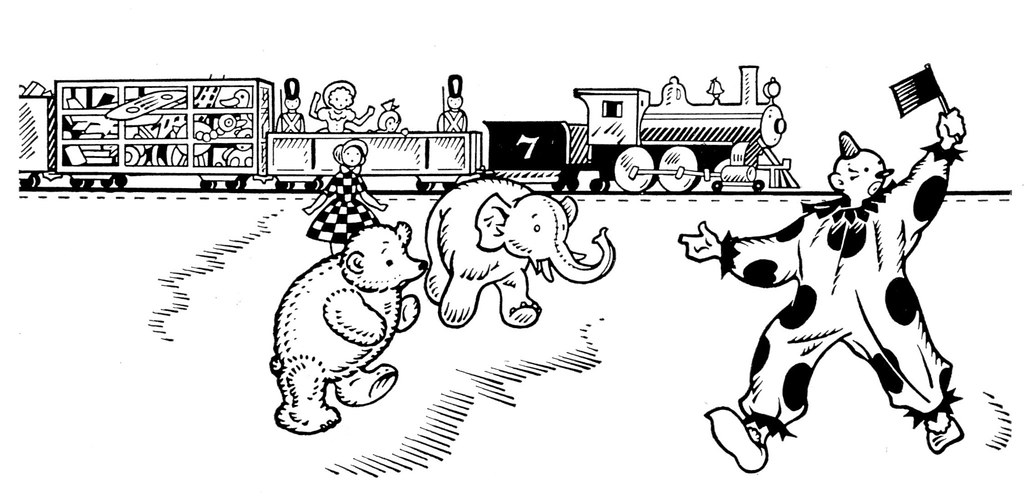#George and Doris Hauman
Text




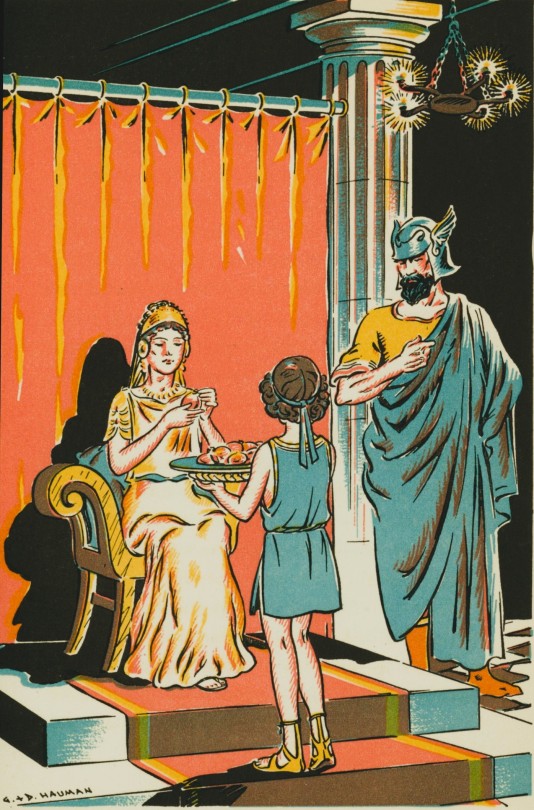


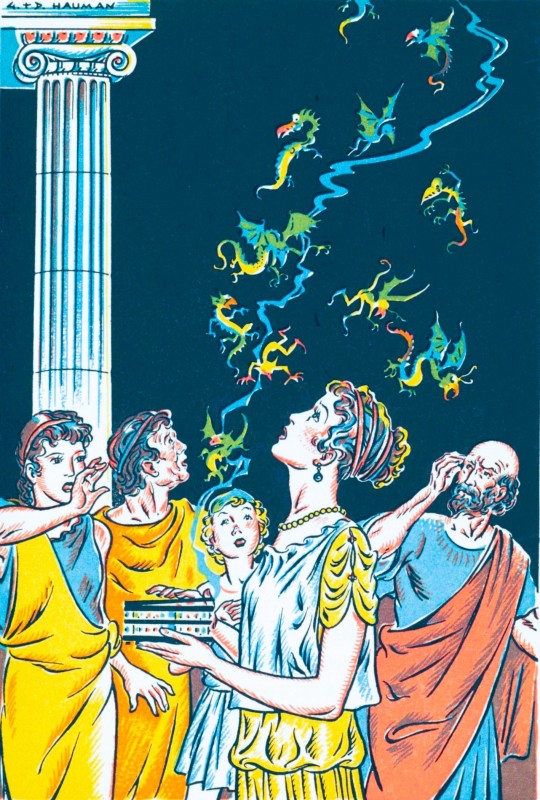



Greek Child's Play
Published in 1945 by Little Brown & Company, Adventures with the Gods by Catharine Sellew and illustrated by George and Doris Hauman is a charming primer created for young children. It contains sixteen stories featuring the heroes of Greek mythology as well as the gods and goddesses of Mount Olympus. The book even includes a handy index of all the characters' names and how to pronounce them. This delightful collection of stories provides an accessible introduction to the fascinating world of Greek mythology, making it an enchanting read for both children and adults.
Catharine Sellew, an American author, has a talent for turning ancient myths and legends into children's stories. Written using simple language and ideas, her stories create an almost fairytale-like experience for readers. It's no surprise that her works are captivating and beloved by many.
George and Doris Hauman were a married couple and American children’s book illustrators. They are perhaps most well-known for illustrating the popular 1954 edition of The Little Engine That Could. The couple decided to collaborate on projects because they had so many customers in common. They also used a joint signature for all of their illustrations.
View other Classics posts.
View our other posts on children's books.
-Melissa, Special Collections Classics Intern
#Classics#greek mythology#greek gods#Adventures with the Gods#Catharine Sellew#George and Doris Hauman#Little Brown & Company#little brown books for young readers#goddesses#illustrations#myths#mythology#children's books#Historical Curriculum Collection
146 notes
·
View notes
Link
Check out this listing I just added to my Poshmark closet: The Little Engine That Could.
0 notes
Photo
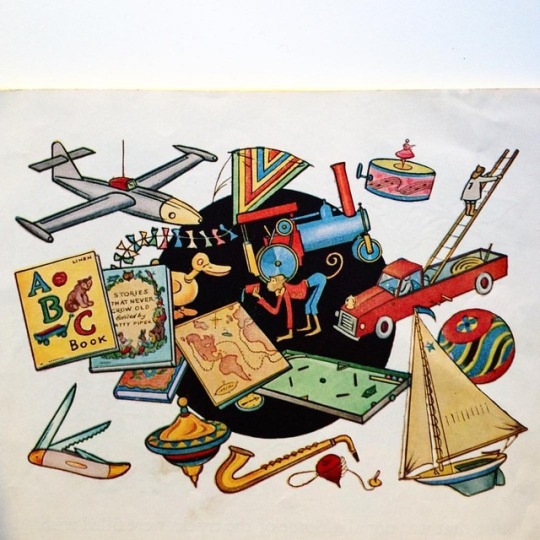
Do you recognise this #illustration? It's from #TheLittleEngineThatCould by #WattyPiper, first published in #1956. I've had my copy since I was one year old! I loved it so much, I genuinely think it influenced how my visual tastes developed. This picture in particular speaks to me so strongly even now! The illustrators were George and Doris #Hauman. https://www.instagram.com/p/BtYE2y4F3DJ/?utm_source=ig_tumblr_share&igshid=8e7hlm8oiu82
26 notes
·
View notes
Photo
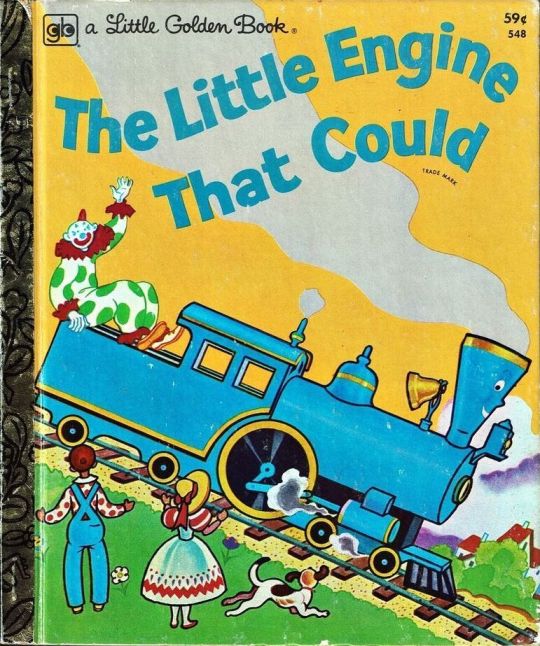
THE LITTLE ENGINE THAT COULD / 548
by Wally Piper
illustrated by George & Doris Hauman
1954/1964
1 note
·
View note
Note
Your new nickname is magazine. Your hat looks like burnt maccoroni. Can I eat your crown???
“The Little Engine That Could is an illustrated children’s book that became widely known in the United States after publication in 1930 by Platt & Munk. The story is used to teach children the value of optimism and hard work. Based on a 2007 online poll, the National Education Association named the book one of its “Teachers’ Top 100 Books for Children”
BACKGROUND
The story’s signature phrases such as “I think I can” first occurred in print in a 1902 article in a Swedish journal. An early published version of the story, “Story of the Engine That Thought It Could”, appeared in the New-York Tribune on April 8, 1906, as part of a sermon by the Rev. Charles S. Wing.
A brief version of the tale appeared under the title Thinking One Can in 1906, in Wellspring for Young People, a Sunday school publication. This version reappeared in a 1910 book, Foundation Stones of Success.
Another version was published under the name “The Pony Engine” in the Kindergarten Review in 1910, written by Mary C. Jacobs. A different version with the same title appeared in a magazine for children in 1916 under the name of Mabel C. Bragg, a teacher, but she “took no credit for originating the story”.
The story first appeared in print with the title The Little Engine That Could in 1920, collected in one volume of My Book House, a set of books sold in the U.S. by door-to-door salespersons. The Book House version began, “Once there was a Train-of-Cars; she was flying across the country with a load of Christmas toys for the children who lived on the other side of the mountain.” The story was labeled “As told by Olive Beaupré Miller”; the first edition gave credit to Bragg, but subsequent editions did not as Miller subsequently concluded that “the story belonged to the realm of folk literature”. Miller was the founding editor and publisher of The Book House for Children, a company based in Chicago.
The best known incarnation of the story The Little Engine That Could was written by “Watty Piper”, a pen name of Arnold Munk, who was the owner of the publishing firm Platt & Munk. Arnold Munk was born in Hungary, and as a child, moved with his family to the United States, settling in Chicago. Later he moved to New York. Platt & Munk’s offices were at 200 Fifth Avenue until 1957 when Arnold Munk died. Arnold Munk used the name Watty Piper as both an author of children’s books and as the editor of many of the books that Platt & Munk published. He personally hired Lois Lenski to illustrate the book. This retelling of the tale The Pony Engine appeared in 1930, with a title page that stated: “Retold by Watty Piper from The Pony Engine by Mabel C. Bragg’s copyrighted by George H. Doran and Co.”
In 1954, Platt & Munk published another version of The Little Engine That Could, with slightly revised language and new, more colorful illustrations by George and Doris Hauman. Although there had been many previous editions of this classic story, “It was the work of George and Doris Hauman that earned The Little Engine the title of being worthy to sit on the same shelf as Alice’s Adventures in Wonderland.” A 1976 rework featured art by Ruth Sanderson received a lot of attention at the time of its release, in part because the art reflected “the stereotypes of masculine strength and feminine weakness in vogue when it was written”.
PLOT
In the tale, a long train must be pulled over a high mountain. Larger engines, treated anthropomorphically, are asked to pull the train; for various reasons they refuse. The request is sent to a small engine, who agrees to try. The engine succeeds in pulling the train over the mountain while repeating its motto: “I-think-I-can”.
The story of the little engine has been told and retold many times. The underlying theme is the same — a stranded train is unable to find an engine willing to take it on over difficult terrain to its destination. Only the little blue engine is willing to try and, while repeating the mantra “I think I can, I think I can”, overcomes a seemingly impossible task.
An early version goes as follows:
A little railroad engine was employed about a station yard for such work as it was built for, pulling a few cars on and off the switches. One morning it was waiting for the next call when a long train of freight-cars asked a large engine in the roundhouse to take it over the hill. “I can’t; that is too much a pull for me”, said the great engine built for hard work. Then the train asked another engine, and another, only to hear excuses and be refused. In desperation, the train asked the little switch engine to draw it up the grade and down on the other side. “I think I can”, puffed the little locomotive, and put itself in front of the great heavy train. As it went on the little engine kept bravely puffing faster and faster, “I think I can, I think I can, I think I can.”As it neared the top of the grade, which had so discouraged the larger engines, it went more slowly. However, it still kept saying, “I—think—I—can, I—think—I—can.” It reached the top by drawing on bravery and then went on down the grade, congratulating itself by saying, “I thought I could, I thought I could.”
VERSIONS
Later versions would revamp the story to have a more specific appeal for children – the stranded train is recast as a train of good food and anthropomorphic toys for the children across the mountain, thus in saving the train the little engine seems to be working for the benefit of the child reader, making the successful deed all the more triumphant.
In these versions another character appeared and remained a key part of the story hereafter – the clown ringleader of the toys who attempts to find help with several locomotives but is rebuffed. The number of engines in the story also eventually became standard across the tellings: The happy locomotive on the toy train who breaks down and cannot go on, the pompous passenger engine who considers himself too grand for the task, the powerful freight engine who views himself as too important, and the elderly engine who lacks either the strength or determination to help the toys. The little blue engine always appears last and, although perhaps reluctant (some editions have the engine clarify her role as a switcher not suited for road-work), always rises to the occasion and saves the day for the children over the mountain.
Each engine is defined by its appearance or function and is not given a name or personality beyond its role on the railroad. It is only in the 1991 film adaption that the engines’ personalities are expanded on, including the granting of names: Farnsworth (the express engine), Pete (the freight engine), Georgia (the friendly engine of the toy train), Jebediah (the elderly engine) and Tillie, the titular “little engine that could”. The clown was also named “Rollo” and a sixth engine character, Doc, appeared briefly to recover the broken-down Georgia and thus tie up the hanging story-thread of what happened to the failed engine of the toy train, which all other versions leave unaddressed.
FILMS
The tale with its easy-to-grasp moral has become a classic children’s story and was adapted in November 1991 as a 30-minute animated film produced in Wales and co-financed in Wales and the United States. The film named the famous little engine Tillie and expanded the narrative into a larger story of self-discovery.
In March 2011, the story was adapted as a 3-D film named The Little Engine That Could, produced by Universal Studios and featuring the voices of Whoopi Goldberg, Jamie Lee Curtis, Alyson Stoner, and Corbin Bleu.
“LITTLE ENGINE” TOYS AND RAIL TOURS
A full-size replica of the Little Engine That Could makes an annual circuit around the United States. Arranged through Rail Events, Inc., a number of tourist and museum railroad operations host the “I Think I Can” Rail Tour. The replica was constructed in 2005 by the Strasburg Rail Road in southeast Pennsylvania. Strasburg also constructed the Thomas The Tank Engine replicas that tour the United States.
American toy company Whittle Shortline produces wooden toy trains of The Little Engine That Could as a domestic alternative to Thomas the Tank Engine. Maxim Enterprise held the license prior to 2006.
IN POPULAR CULTURE
In the 1941 Disney movie Dumbo, when Casey Jr. the circus train puffs up a hill, he chants, “I think I can!” and “I thought I could!” when going down the hill.
International champion vintage motorcycle racer Todd Henning’s motto was “I think I can!” and he named his racing team I Think I Can Racing after the book.
This book was chosen by “Jumpstart Read for the Record” to be read worldwide to tens of thousands of children on August 24, 2006.[7]
Shel Silverstein wrote the poem “The Little Blue Engine”, which referenced this story.
West End and Broadway musical Starlight Express was loosely based on the book.
The original logo for Elton John’s record label The Rocket Record Company was based on the book.
One of the Vagina Monologues is called “The Little Coochie Snorcher That Could”.
The chorus of C'mon ‘N’ Ride It by the Quad City DJ’s repeats “I think I can!” as a rhythmic part to sound like a train.
A song on The Pillows Fool on the Planet album is called “I think I can”, and the chorus is a repeat of “I think I can!”.
NBA player Kyle Lowry is nicknamed “The Little Engine That Could” by Toronto Raptors play-by-play announcer Matt Devlin.
In episode 1 of season 3 of the TV series Married… with Children titled “He Thought He Could”, Al Bundy has to return a copy of the book that he borrowed in 1957.
A Far Side cartoon by Gary Larson, published October 18, 1993, shows the little engine sitting broken on the sidewalk, panhandling with a sign reading “I thought I could, I thought I could …”.
SEE ALSO
Thomas the Tank Engine
….Vi didn’t know how to answer this one so I, here loving boyfriend @Ravioko, did so for her.
1 note
·
View note
Quote
This book did not interest my daughter one bit. Even though this book is considered a great classic, it seems out of date in today's world. Maybe it should be pushed to tje back shelf to collect dust. At least it would accomplishing something.
T.K. Seeblack Superstar reviews The Little Engine That Could
#the little engine that could#watty piper#george hauman#doris hauman#trains#classics#at least it would be accomplishing something#sick burns
0 notes
Text
What My Mother Read To Me: THE LITTLE ENGINE THAT COULD
What My Mother Read To Me: THE LITTLE ENGINE THAT COULD
One of the earliest books that I remember my mother reading to me was The Little Engine That Could. I went online to see if I could find the cover of the edition she read to my younger brother and me, but I couldn’t be sure which one it was. It was probably the 1954 version, illustrated by George and Doris Hauman, because I remember a lot of colored pictures inside. (To see two of the early…
View On WordPress
0 notes
Text
Praying Made Easy. 2. Past Self-Doubt
Praying Made Easy. 2. Past Self-Doubt
Getting past self-doubt is a normal, natural desire. Just is it’s perfectly normal and natural to doubt the ability to do The Little Engine That Could (illus. by George & Doris Hauman) certain things. Even the most confident individual experiences self-doubt in the face of certain things. That’s a problem when those doubts get in the way of what we want for ourselves, what we want to do, and who…
View On WordPress
0 notes
Video
Her wheels would not turn..... by Kathie McMillan
Via Flickr:
"Stories That Never Grow Old" Star Edition edited by Watty Piper, illustrated by George and Doris Hauman. Copyright 1938 by The Platt and Monk Co., Inc. "The Little Engine That Could" came from "The Pony Engine" by Mabel C. Bragg. I have seen other books of this name with a different front cover.
#vintage children's illustrations#vintage children's stories#1938#George and Doris Hauman#Doris and George Hauman#Hauman#George and Doris#Watty Piper
0 notes
Link
Check out this listing I just added to my Poshmark closet: The Little Engine That Could.
0 notes
